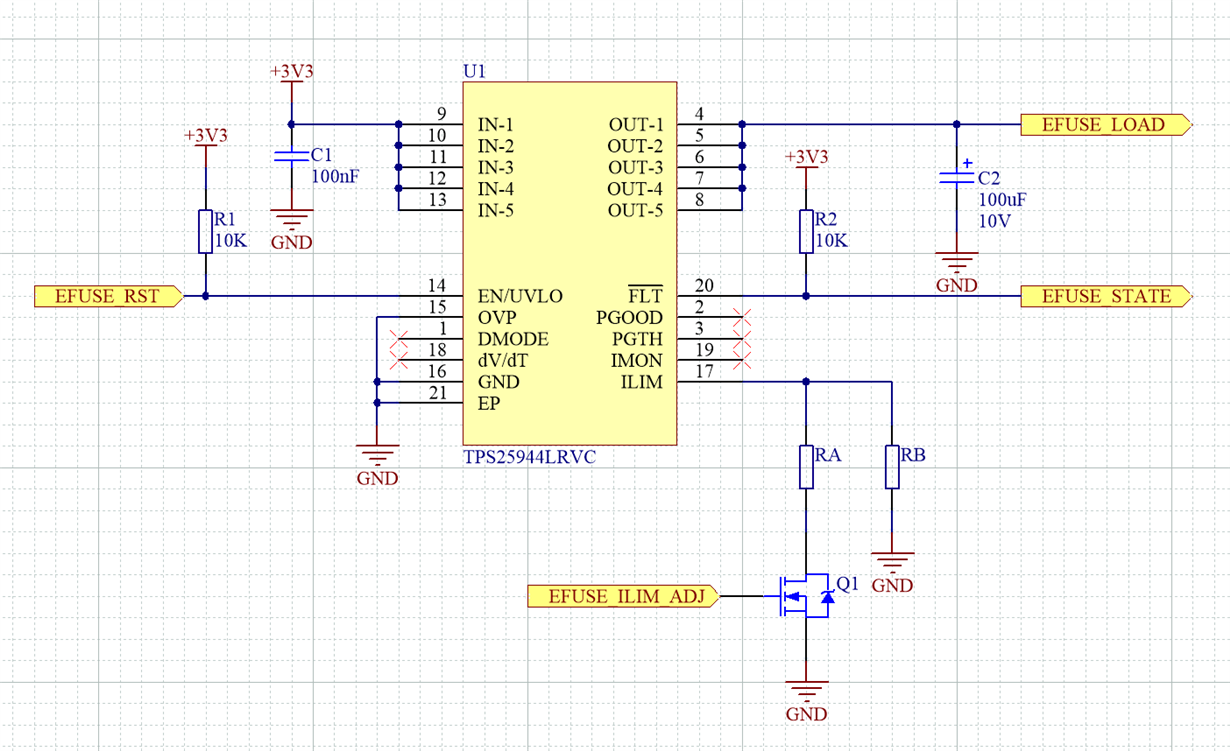Other Parts Discussed in Thread: TPS25944A
Hi,
I have an application that can be either powered from USB or external power adapter. Depending on if there is external power or not i would like to increase the efuse current limit.
I have made the following (simplified) circuit:
A comparator is used to detect if external power adapter is preset, which in turn enables Q1.
I know this is not the typical application and its also likely to be the reason for the odd behavior i get from this circuit because of this, which is the following:
1) The default condition is USB powered, which uses only RB to set ILIM.
2) If external power is connected RA is put in parallel to RB changing the limit (increasing ILIM). which works fine.
3) If than the load is adjusted to somewhere in the new higher limit range, and external power adapter is removed. ILIM is changed back to the lower limit with only RB. In this situation the efuse seems to trip as expected (disable output), but the fault pin did not change state to fault condition (It seems like there is only rising edge flank current detection to generate the over-current fault condition?).
A solution would be to give a reset pulse in case external power is removed, but this also disconnects the load for the pulse duration which in case of a "light load which could be USB powered" is undesired.
Does anyone know if there's a easy workaround for this issue?
Regards,
Ivo


